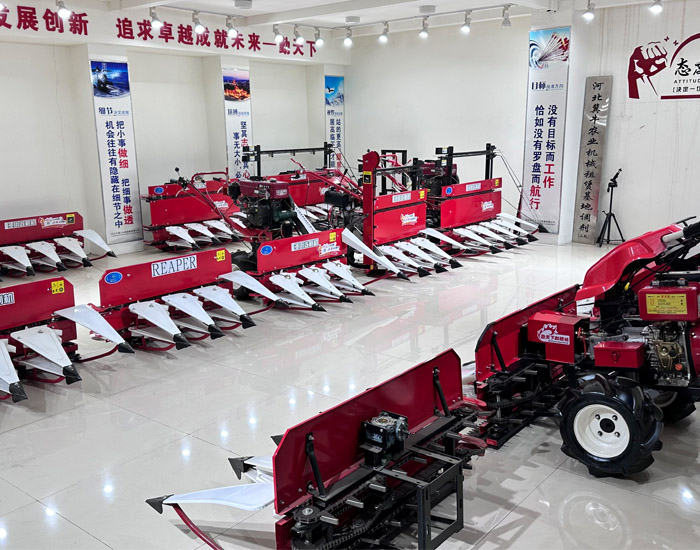wheat cutting reaper
The Evolution and Impact of the Wheat Cutting Reaper
The agricultural landscape has undergone monumental changes since the dawn of civilization, but few innovations have been as transformative as the wheat cutting reaper. This remarkable machine revolutionized the process of harvesting, significantly increasing efficiency and productivity in farming. To appreciate the significance of this invention, it is crucial to explore its historical context, technical specifications, and the enduring impact it has had on agriculture and society.
Historical Background
Before the advent of the reaper, the process of harvesting wheat was labor-intensive and time-consuming. Farmers relied on sickles and scythes, tools that required immense manual effort and often resulted in unevenly cut crops. The industrial revolution in the 18th and 19th centuries provided the technological impetus for inventions that would alleviate these challenges. One of the pioneers in the quest for agricultural mechanization was Cyrus McCormick, who in the 1830s, successfully developed the first commercially viable wheat cutting reaper.
McCormick's prototype combined horse-drawn power with a mechanized cutting mechanism. This system enabled farmers to harvest large fields much more quickly than was previously possible. The reaper’s initial designs used a series of blades and a rotating reel to gather and cut the wheat, laying the cut stalks neatly in rows for easy collection. By significantly reducing the time and labor involved in harvesting, McCormick's invention played a crucial role in the agricultural sector, particularly in the United States, which was undergoing rapid expansion during this period.
Technical Advancements
Over the years, the wheat cutting reaper saw several enhancements that improved its efficiency and effectiveness
. Early models were limited by their relatively small size and rudimentary design, but as engineering knowledge progressed, so did the capabilities of these machines. The introduction of steam power and later, gasoline engines, transformed the reaper into a self-propelling machine, capable of harvesting large expanses of wheat crops with minimal manpower.wheat cutting reaper

The modern wheat cutting reaper is equipped with advanced features such as GPS technology, variable cutting widths, and automated systems that facilitate precision farming. These innovations allow farmers to optimize their operations, reducing waste and increasing overall yield. Additionally, modern reapers are often designed to minimize soil compaction and protect crop quality, striking a balance between efficiency and environmental sustainability.
Economic and Social Impact
The impact of the wheat cutting reaper extends far beyond its immediate functionality. Economically, it allowed for a paradigm shift in agriculture by facilitating larger scale farming operations. As productivity increased, farmers could cultivate more land, leading to greater food production to meet the demands of a growing population. This transition not only transformed rural economies but also contributed to urbanization as people moved to cities for work in emerging industries.
Socially, the reaper altered the dynamics of labor in agriculture. The increased efficiency of mechanized harvesting meant that fewer workers were needed in the fields. While this presented challenges for farm laborers, it also led to the emergence of new roles in agricultural management, maintenance of machinery, and agribusiness support services. Consequently, the reaper catalyzed a shift in labor practices, resulting in a workforce that was increasingly skilled and specialized.
Conclusion
The wheat cutting reaper stands as a testament to human ingenuity in the face of agricultural challenges. This remarkable invention reshaped farming practices, boosted food production, and carved new social and economic paths for rural communities. As the world continues to grapple with growing populations and the challenge of food security, innovations like the wheat cutting reaper serve as critical reminders of the importance of agricultural technology.
The legacy of the wheat cutting reaper reflects broader trends in mechanization, efficiency, and sustainability that will undoubtedly continue to evolve in the ever-changing tapestry of agriculture. As we look to the future, the principles established by this groundbreaking invention will play an essential role in shaping modern practices, ensuring that agriculture remains resilient and capable of meeting the needs of a burgeoning world.
Latest news
-
When to Upgrade Your Old Forage HarvesterNewsJun.05,2025
-
One Forage Harvester for All Your NeedsNewsJun.05,2025
-
Mastering the Grass Reaper MachineNewsJun.05,2025
-
How Small Farms Make Full Use of Wheat ReaperNewsJun.05,2025
-
Harvesting Wheat the Easy Way: Use a Mini Tractor ReaperNewsJun.05,2025
-
Growing Demand for the Mini Tractor Reaper in AsiaNewsJun.05,2025
